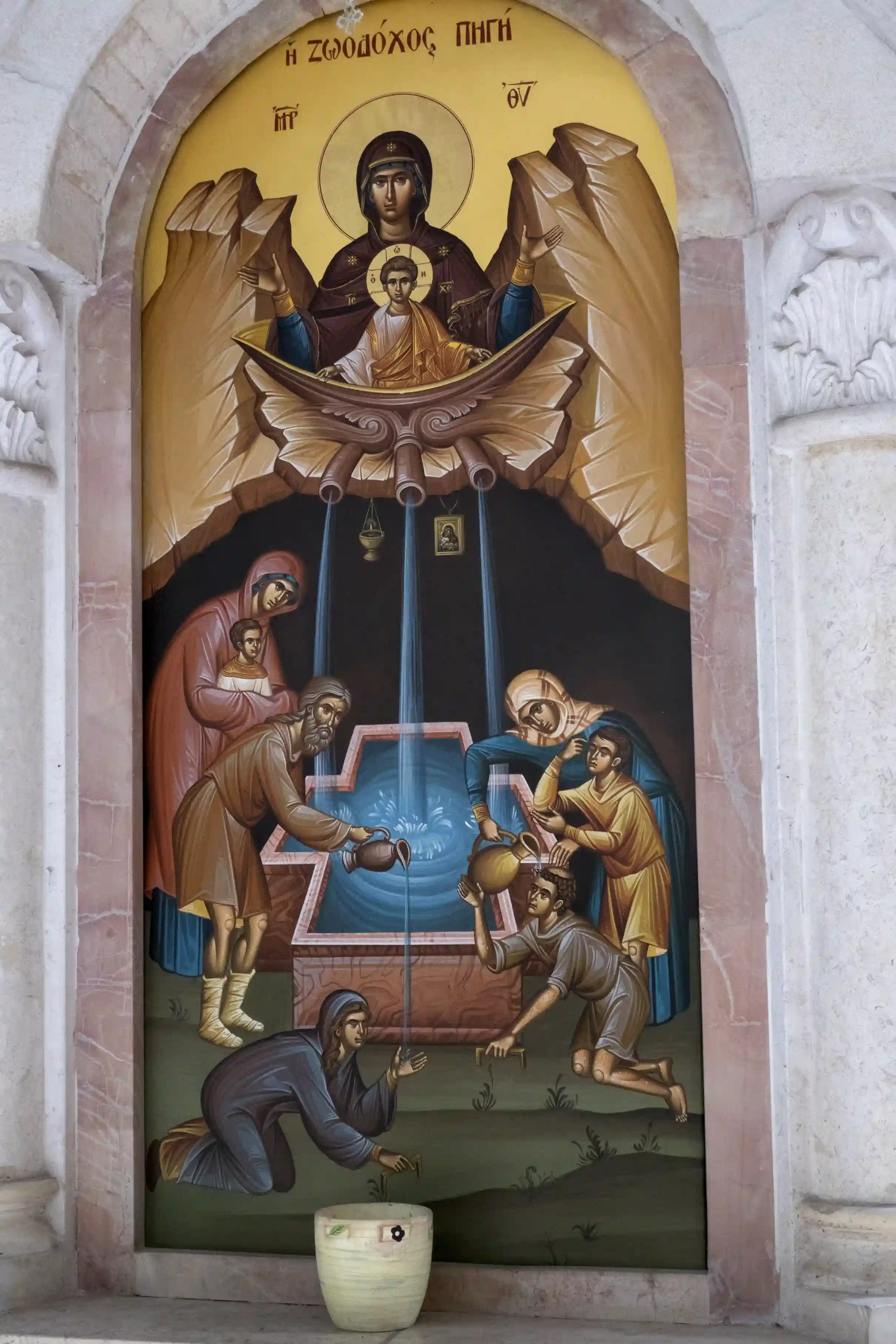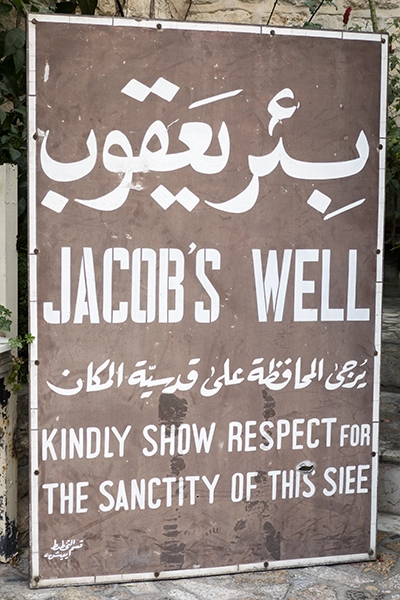Jacob's Well, Nablus
Jacob's Well, located in Nablus (ancient Shechem) in the West Bank, Israel, is a sacred Christian site renowned for its biblical significance and role as a pilgrimage destination. Situated beneath the Greek Orthodox Church of St. Photina, the well is traditionally identified as the place where Jesus met the Samaritan woman, as described in John 4:5–42. This encounter, where Jesus offered "living water," underscores themes of salvation and inclusivity, making the well a powerful symbol for pilgrims seeking spiritual renewal.
The well's history is rooted in biblical tradition, attributed to the patriarch Jacob, who reportedly dug it for his family and livestock after purchasing land near Shechem (Genesis 33:18–20). Archaeological evidence supports its antiquity, with the well, hewn into bedrock and exceeding 40 meters in depth, likely dating to the 2nd millennium BCE. Its reliable water source made it a vital feature in the arid region, and by the 1st century CE, it was a significant landmark in Samaria. The Gospel account of Jesus' dialogue with the Samaritan woman elevated its spiritual importance, marking it as a site of divine revelation.
Early Christians began venerating Jacob's Well soon after, with a church constructed over it by the 4th century CE, as noted by the pilgrim Egeria. This early basilica was destroyed during the Persian invasion of 614 CE and later rebuilt under Byzantine and Crusader rule. Subsequent conquests, including Muslim and Ottoman periods, led to further damage, but the site's sanctity endured. The current church, completed in 1908 by the Greek Orthodox Monastery of St. Photina, features a white-domed basilica adorned with icons and a crypt housing the well. Pilgrims descend a short staircase to access the well, often drawing water as a symbolic act tied to Jesus' promise of eternal life.
As a pilgrimage site, Jacob's Well holds profound significance, particularly for Orthodox and Catholic Christians. Its connection to the Gospel narrative draws thousands annually, who visit to pray, reflect, and engage with the story of the Samaritan woman, venerated as St. Photina in Orthodox tradition. The church's serene interior, filled with incense and candlelight, fosters a contemplative atmosphere. Annual feasts, such as the Sunday of the Samaritan Woman during the Orthodox Easter season, feature liturgies and processions, attracting both local Christians and international pilgrims. The well's tangible link to Jesus' ministry offers a direct connection to biblical history, enhancing its spiritual allure.
Despite its sacred status, Jacob's Well is situated in a politically sensitive area, and access can be restricted due to regional tensions. Nevertheless, the Greek Orthodox community maintains the site, ensuring its preservation. The surrounding landscape, with views of Mount Gerizim and Mount Ebal, adds to the site's historical ambiance. For centuries, Jacob's Well has remained a beacon of faith, drawing pilgrims who seek to experience the "living water" of Christ's teachings in one of Christianity's most evocative holy places.

Martin Gray is a cultural anthropologist, writer and photographer specializing in the study of pilgrimage traditions and sacred sites around the world. During a 40 year period he has visited more than 2000 pilgrimage places in 160 countries. The World Pilgrimage Guide at sacredsites.com is the most comprehensive source of information on this subject.



